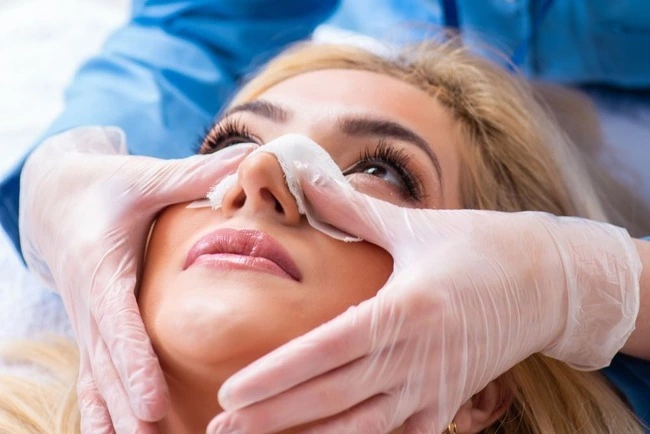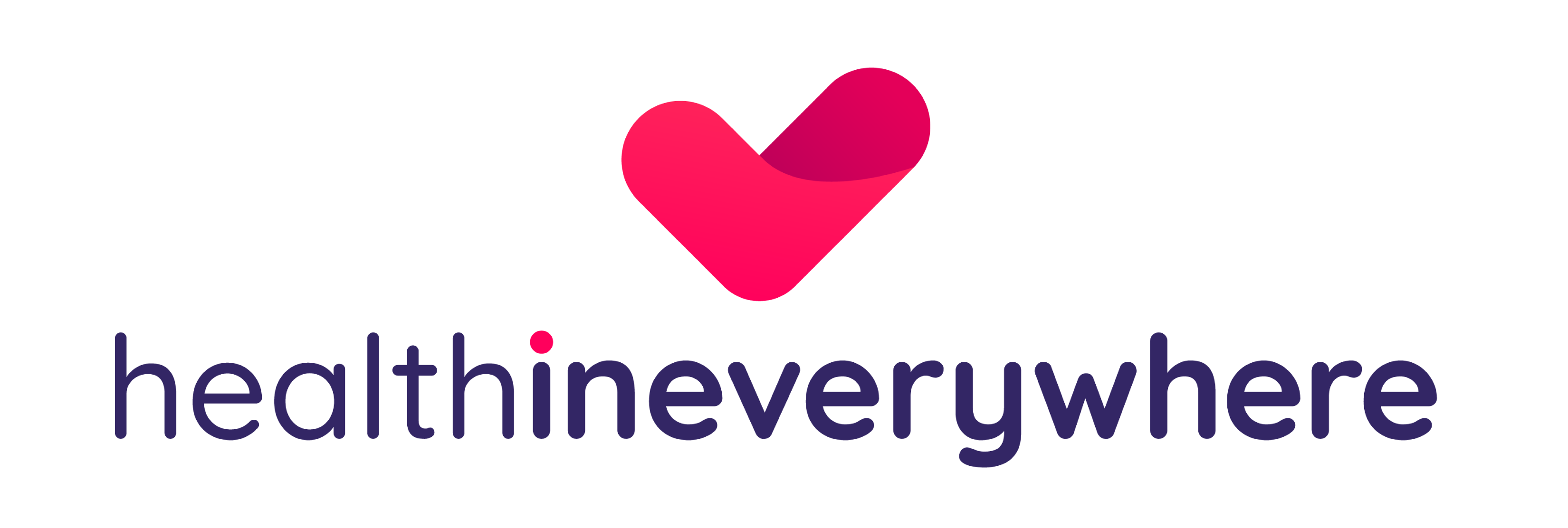Rhinoplasty


Antalya Yaşam Hospitals
Antalya/Turkiye
Prices starting from
$ 2.065
Please Fill in the Form to Contact Us
Our Happy Patients
What is Rhinoplasty?
Rhinoplasty is a type of nose surgery and can be done to change the shape and size of the nose. Nose surgery can be done for purely cosmetic purposes, such as making the nose appear more proportional to the rest of the face, or for medical reasons, such as repairing the structure of the nose to make breathing easier. According to the American Society of Plastic Surgeons, rhinoplasty is the fourth most popular plastic surgery operation in 2019. Rhinoplasty is the most common surgical technique among men.
Who Needs Rhinoplasty?
Rhinoplasty operations are of two types: those performed only for aesthetic reasons and those performed for
medical reasons.
Most of the time, correction or restructuring of the nose is related to medical reasons. Septum is another problem
that rhinoplasty can fix. Septoplasty is the name of the surgery that corrects the inside of the nose.
However, cosmetic surgery only focuses on the idea of how to improve your appearance. There are many different types
of noses and for some people the shape of the nose is very important. According to popular belief, a big nose, arched
nose and asymmetrical nose prevent a 'beautiful' face.
When Can I Have a Rhinoplasty?
Rhinoplasty is directly related to facial development. If the face is still developing, it would be wrong to have a rhinoplasty. There is no upper age limit for rhinoplasty operations, but patients must be in good health.
What You Need To Know About Rhinoplasty?
As with any surgical procedure, it is important to have realistic expectations regarding rhinoplasty. Your surgeon can provide before and after pictures to showcase potential results, but they also inform patients of contraindications for surgery. The normal recovery time for rhinoplasty is two weeks, but it can take a year or more to see the final results of the procedure.
What Are the Risks of Rhinoplasty?
The rhinoplasty surgical procedure may involve certain risks and complications common to any major surgery. These may be anesthesia-related complications such as bleeding, infection, and adverse reaction. There can be complications from rhinoplasty surgery, especially damage to the septum and nasal cartilage, post-operative breathing problems, and poor wound healing that can result in scarring. Nosebleeds after rhinoplasty is the most common risk associated with this surgical procedure. Since the nose has sensitive blood vessels, patients may lose some blood during the operation and nosebleeds may occur after the operation. To minimize this risk, it is essential to follow the post-operative instructions given by the surgeon. Changes in the size and shape of the nose can affect the patient's nasal breathing and cause problems with the sense of smell for up to 3-6 weeks after surgery.
Can Rhinoplasty Help Breathing?
Rhinoplasty has the potential to alleviate a variety of breathing difficulties. Abnormalities in the structure of the nose are often the culprits behind respiratory problems, and the most common is septum deviation. The septum is a cartilage that divides the nose into two. When the septum is not aligned with the center of the nose, it can disrupt airflow through the nostrils, causing symptoms such as difficulty breathing, congestion, headaches, and facial pain. Rhinoplasty is considered the most effective treatment for such breathing difficulties, but a doctor's consultation is needed as other factors can also contribute to breathing problems.
How Long Does Rhinoplasty Surgery Take?
The duration of rhinoplasty surgery is generally between 1.5 and 3 hours and is usually performed as an outpatient procedure.
How Do You Prepare for Rhinoplasty?
To prepare for rhinoplasty, the surgeon will ask for your medical history through a physical examination. Pictures of your nose can also be taken. Before the surgery, you will be asked to stop smoking, drink water and eat a healthy diet if necessary. You will also be provided with a treatment plan.
What Is Done Before Rhinoplasty Surgery?
Patients should follow the general preoperative recommendations before undergoing rhinoplasty surgery. To prevent possible complications related to wound healing and circulation, patients should not smoke, maintain adequate hydration levels, and consume a healthy diet. In addition, patients should avoid alcohol and sun exposure while discontinuing certain medications, such as aspirin and other blood thinners, at least 7 days before the procedure.
Is Rhinoplasty a Painful Procedure?
The level of pain associated with rhinoplasty is relatively low. Painkillers may be recommended after surgery and taken for a few days if needed. Additionally, patients may experience nasal congestion, dryness of the throat and lips, which can be more bothersome than the pain itself.
How Long Does Rhinoplasty Heal?
Rhinoplasty recovery time varies depending on the specific procedure and the person's ability to heal. Recovery after nose surgery is usually quick. Most patients can return to work within three weeks. The full recovery time for rhinoplasty, including the final result, takes longer. Due to the long-term swelling of the soft tissues of the nose, the emergence of new nasal contours may take several months or even a year.
What Not to Do After Rhinoplasty?
During the first three weeks following rhinoplasty, strenuous activities and exercise should be avoided. Swimming should be avoided for six weeks and contact sports for 4-6 months after surgery. Some surgeons recommend abstaining from sexual activity for the first three weeks. Walking is recommended to prevent blood clots, but patients should not blow their noses or wear glasses as this can cause damage. Patients should also avoid sunbathing, smoking and drinking alcohol. Makeup and touching the nose can delay the healing process.
When Can I Touch My Nose After Rhinoplasty?
After undergoing rhinoplasty, it is highly recommended that you avoid touching, poking or banging your nose, as this can adversely affect tissue alignment and potentially reverse the results of the surgery. To prevent such complications, it would be good to protect your nose for at least 1-2 weeks after the procedure.

Antalya Yaşam Hospitals
Hospital Images
Asım Uslu, MD

Education and Expertise
- ERCİYES UNIVERSITY FACULTY OF MEDICINE
- AKDENİZ UNIVERSITY PLASTIC SURGERY DEPARTMENT
Membership in Scientific Organizations
- TURKISH ASSOCIATION OF PLASTIC RECONSTRUCTIVE AND AESTHETIC SURGERY
- AESTHETIC PLASTIC SURGERY ASSOCIATION
Tasks and Experience
- GÜLHANE MILITARY MEDICAL ACADEMY (2009 - 2011)
- ÇANKIRI STATE HOSPITAL (2011 - 2013)
- ANTALYA TRAINING and RESEARCH HOSPITAL (2013 - 2022)
- DOCTOR'S PRACTICE (2022 - Present)
Medical Interests
- MICRO SURGERY
- BREAST SURGERY
- RECONSTRUCTIVE SURGERY
- FACIAL SURGERY
- POSTBARIATRIC SURGERY
Publications - Articles
- USLU ASIM, KORKMAZ MEHMET ALI, SURUCU ABDULLAH, KARAVELI ARZU, ŞAHIN CIHAN, ATAMAN MURAT GORKEM (2019). Breast Reduction Using the Superomedial Pedicle- and Septal Perforator- Based Technique: Our Clinical Experience. Aesthetic Plastic Surgery, 43(1), 27-35., Doi: 10.1007/s00266-018-1177-z.
- USLU ASIM (2019). Reconstruction of the Distal Leg and Foot Using Free Anterolateral Thigh Flaps in Patients With High-Voltage Electrical Burns. Journal of Burn Care Research, 40(5), 703-709., Doi: 10.1093/jbcr/irz070.
- USLU ASIM, SURUCU ABDULLAH, KORKMAZ MEHMET ALI, UYGUR FATIH (2019). Acquired Localized Hypertrichosis Following Pressure Garment and/or Silicone Therapy in Burn Patients. Annals of Plastic Surgery, 82(2), 158-161., Doi: 10.1097/SAP.0000000000001686,
- USLU ASIM (2019). Use of a Perforator/subcutaneous Pedicled Propeller Flap for Reconstruction of Lower Eyelid Defects. Journal of Plastic, Reconstructive Aesthetic Surgery, 72(1), 119-124., Doi: 10.1016/j.bjps.2018.09.006.
- USLU ASIM, COŞKUNFIRAT OSMAN KORAY (2019). Combined Use of Ischemic Preconditioning and Postconditioning in a Skin Flap Model in Rats. Turkish Journal of Plastic Surgery, 27(4), 156-159., Doi: 10.4103/tjps.tjps_70_18.
- COSKUNFIRAT OSMAN KORAY, USLU ASIM, ÇİNPOLAT ANI, BEKTAS GAMZE (2011). Superiority of Medial Circumflex Femoral Artery Perforator Flap in Scrotal Reconstruction. Annals of Plastic Surgery, 67(5), 526-530., Doi: 10.1097/SAP.0b013e318208ff00.
- DIKICI MUSTAFA BAHADIR, COŞKUNFIRAT OSMAN KORAY, USLU ASIM (2009). Effect of Cyclooxygenase-2 on Ischemic Preconditioning of Skin Flaps. Annals of Plastic Surgery, 63(1), 100-104., Doi: 10.1097/SAP.0b013e3181893853.
- COSKUNFIRAT OSMAN KORAY, ÖZKAN ÖMER, USLU ASIM (2010). Clinical Experience With Free Anterior Interosseous Flaps. Annals of Plastic Surgery, 65(3), 306-311., Doi: 10.1097/SAP.0b013e3181cbfe5b.
- MUSLU ÜMRAN, SENEN DEMIREZ DILEK, USLU ASIM, KORKMAZ MEHMET ALI, BILGINSOY FILIZ MERAL (2018). Comparison of Sensory Changes Following Superomedial and Inferior Pedicle Breast Reduction. Aesthetic Plastic Surgery, 42(1), 38-46., Doi: 10.1007/s00266-017-0958-0,
- SAHIN CIHAN, ÖZTÜRK SINAN, SEVER CELALETTIN, EREN FIKRET, USLU ASIM (2015). Tension Setting for Extensor Indicis Proprius to Extensor Pollicis Longus Transfer Using the Wide-awake Approach. Hand and Microsurgery, 4(3), 39-43., Doi: 10.5455/handmicrosurg.178076.
- KARABULUT HACI HALIL, YUYUCU KARABULUT YASEMIN, SENEL ENGIN, DÖLEK YASEMIN, USLU ASIM, KURSUN NAZMIYE (2014). Göz Kapagı Tümörlerinin Histopatolojik ve Demografik Özellikleri. Turkish Journal of Dermatology / Türk Dermatoloji Dergisi, 8(4), 197-201., Doi:10.4274/tdd.2172.
- YUYUCU KARABULUT YASEMIN, KANKAYA DUYGU, SENEL ENGIN, DÖLEK YASEMIN, USLU ASIM, SERTÇELIK AYSE (2015). Idiopatic Scrotal Calcinosis: The Incorrect Terminology of ScrotalCalcinosis. GIORNALE ITALIANO DI DERMATOLOGIA E VENEREOLOGIA, 150(5), 495-499.
